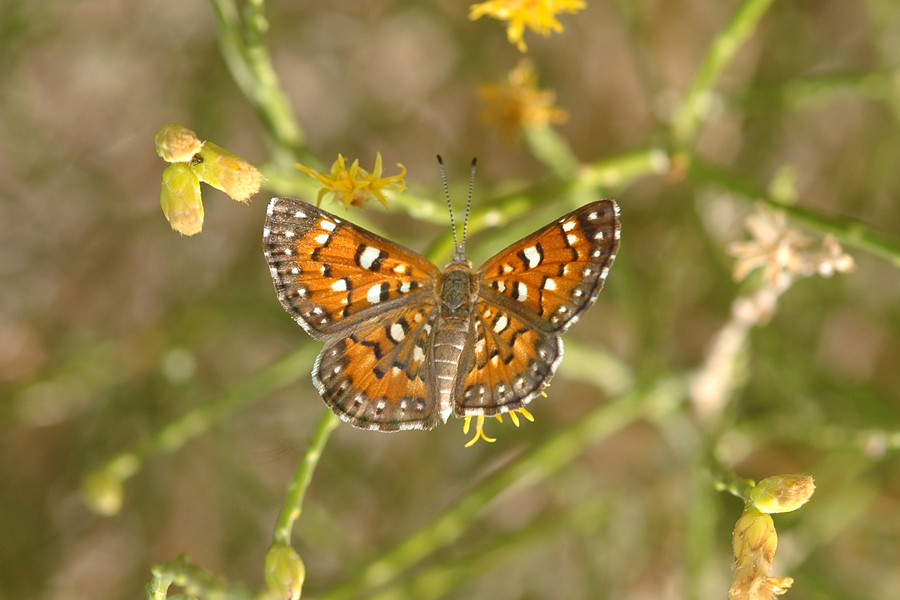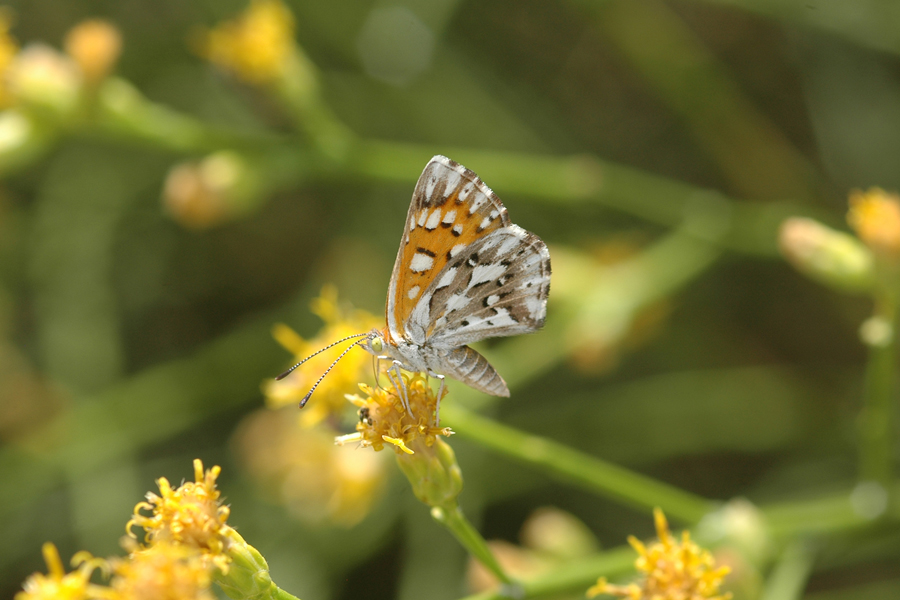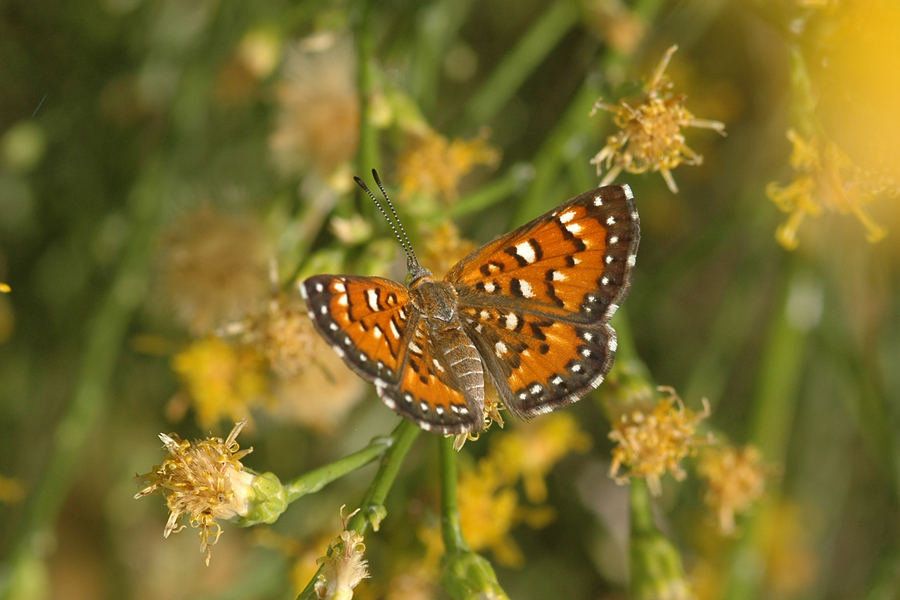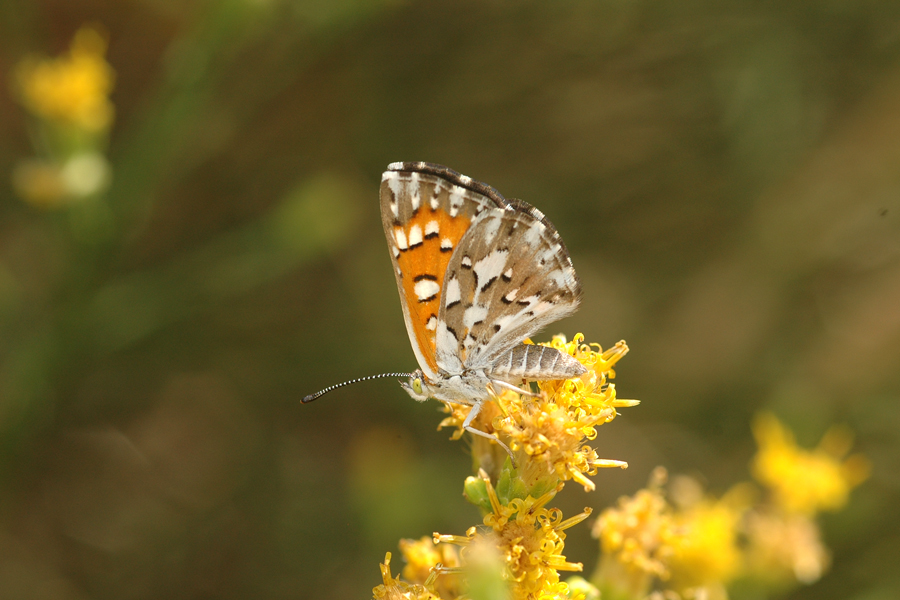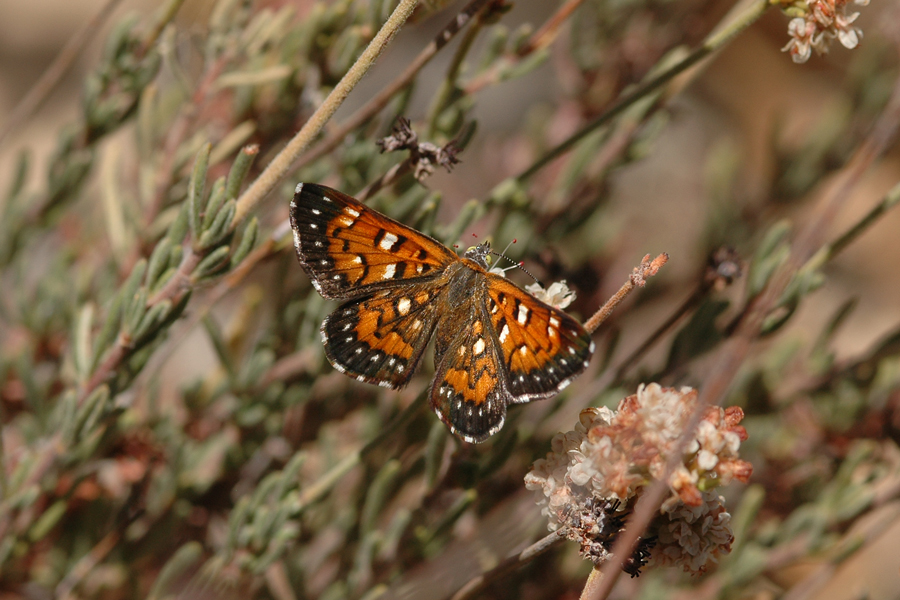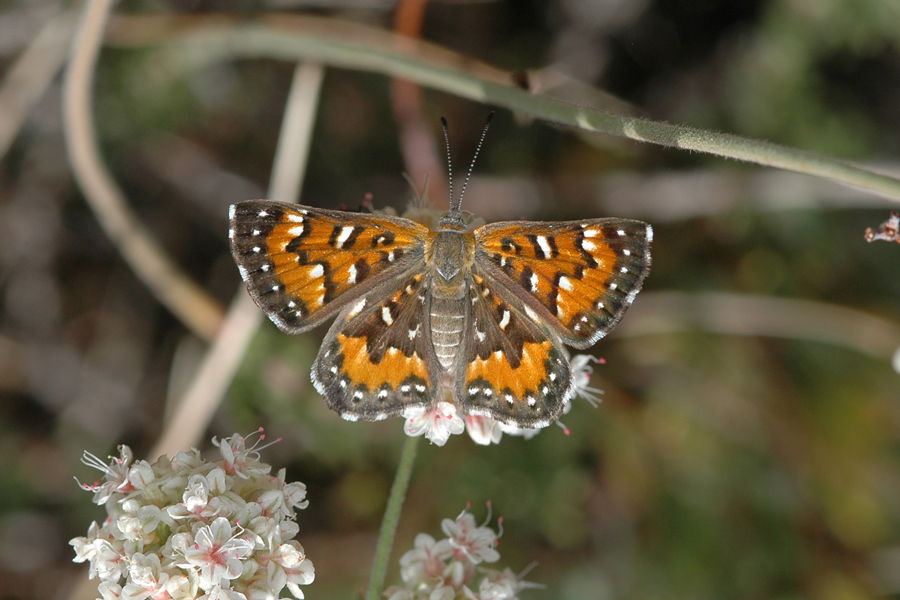Apodemia mormo "cythera"
Mormon Metalmark
True cythera has a type locality west of Lone Pine, in Inyo County. The range of this taxon is not yet known, but preliminary genomic work suggests it gets at least to the Greenhorn Mountains. In much of the current literature, populations on the northern edge of the transverse range and into the Mt. Piños area are considered cythera. That is almost certainly wrong, but until we have a better grasp of the situation, this name will have to do.
There is a remarkable population of "mormon metalmarks" that fly in a single brood ca. late July into September on the northern side of the San Gabriels and east to around Coxey Meadow in the San Bernardinos. My favorite place to see them is up Big Rock Creek Road, where they take nectar at the many yellow scale broom flowers along the road. This golden-orange butterfly is starkly different - visually - from nominate mormo, which is very dark. In this particular creek area, there is plenty of late summer blooming Eriogonum heermannii, the larval food plant of this population. I soon found this butterfly up at Mt Islip to the south around fasciculatum, and at Grizzly Flat as well, all in the same general part of the San Gabriels. Some thirty air miles east at Mojave River Forks, a similarly orange late summer/fall-flying mormo may be found on Eriogonum fasciculatum and E. wrightii. These populations along the desert edge foothills of the San Gabriels and western San Bernardinos are well to the south of true cythera. According to the Pratt and Emmel article from 2011 in American Butterflies, our desert-edge populations have a narrow blend zone around Gold Mountain, northeast of Big Bear Lake, with the nearly black fall flyer we've been calling "near mormo" that uses wrightii around Wildhorse Meadow and vicinity. Stay tuned.
